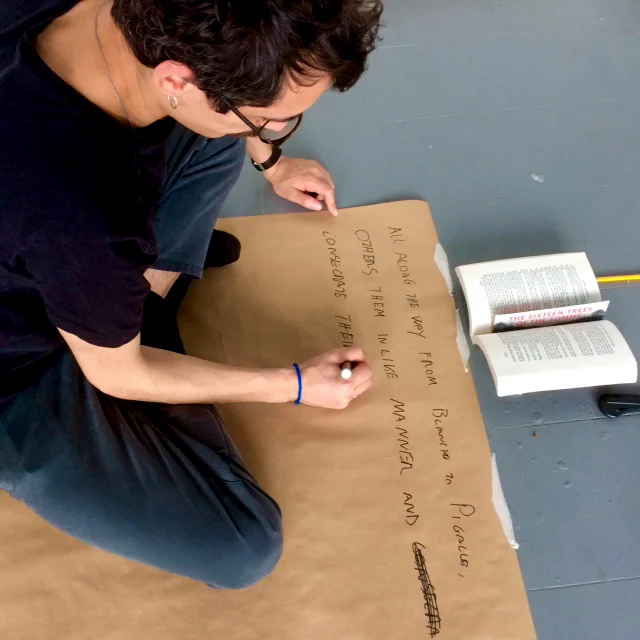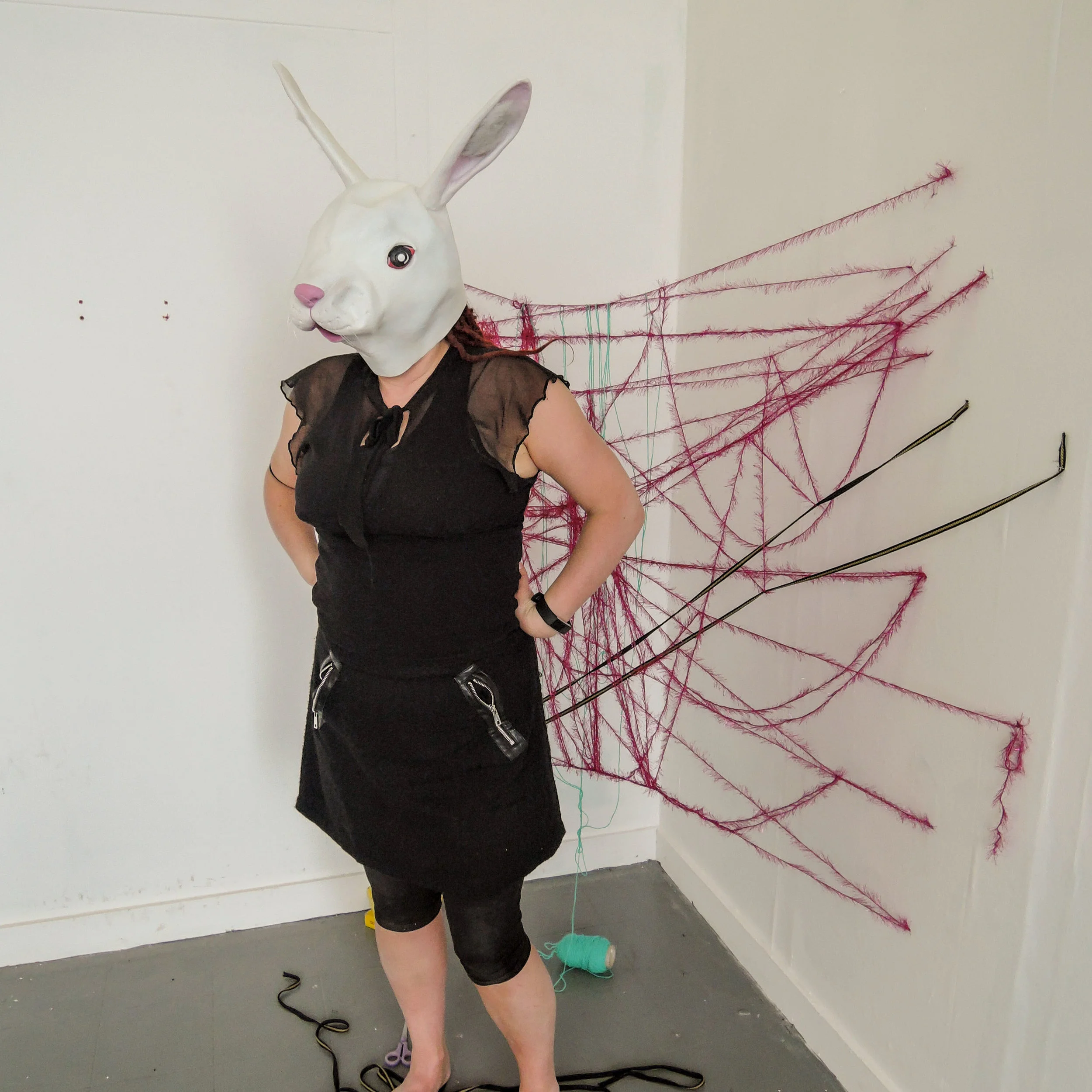Artists rent studios for different reasons: for the physical space to paint, sculpt or build an installation; for the mental and physical space to make work away from other commitments; maybe even to authenticate, for themselves, that they are an artist. Artists also rent studios to feel part of a community of artists.
In reality most of the studio buildings I am familiar with have a limited sense of community. One sees another artist filling the kettle from time to time, and often they will say hallo. Sometimes one makes the effort to introduce oneself, but generally the relationship extends no further than hearing the sound of their arrival or departure.
In spite of this I am lucky enough to feel part of a community of artists. I share a large and beautiful studio in ACAVA’s Limehouse Art Foundation with the three other artists who were awarded the 2018 Artquest Lifeboat residency. This is the first year that Artquest has offered the Lifeboat residency to a group of four, rather than to four individuals, and for us it was a real incentive to apply for the award. Even though our practices, backgrounds, interests and ages are very different, we have successfully established a sense of community between ourselves and with our peer mentoring group.
My own practice is based on an exploration of difference and has its foundation in feminism. I’m really interested in the writings of the Milan Women’s Bookshop Collective from the 1980s. They write about how important it is to do things together. They see this as a way of building a sense of community and mutual support between people who may have nothing in common other than a shared commitment or project. That’s how we can build an appreciation of difference – through valuing and enjoying each person’s distinct contribution to a common goal.
As a community of artists we four Lifeboat artists cleared out and cleaned our studio together and made it comfortable and hospitable; we help each other out; we run a peer mentoring group together, funded by Artquest; we give each other informal crits on request, and we are planning Open Studio and then a show or event together. We communicate– in person, by email and by WhatsApp – so that everyone knows what’s going on with practical issues. We encourage and congratulate each other and commiserate when necessary. We take the mickey out of each other and make each other laugh.
There’s a lot to be gained from being part of a community of artists, and a studio has the potential to be the perfect setting for that way of working. In practice though it may work better to establish a community first and then find a studio. There’s different options for doing that – for example forming a group and then moving it in to a shared studio, or bringing together a peer mentoring group. This may be more successful than relying on building a community with one’s neighbouring artists, with whom one may have little in common either in terms of practice or priorities.
Building and maintaining a community does take time, and it does require people to share responsibility for different tasks, although that will always be in proportion to their other commitments.
Sharing the studio has benefited me and my practice. It’s much more enjoyable to be there with someone else. It’s a real incentive for being there: time goes much more quickly, and, oddly, seems much more productive, than being there alone. We are considerate when we are sharing the space so that we don’t disturb each other. But we do chat a bit and I’ve had helpful crits from all the other members of the group. And there’s something about witnessing the diligence of other artists – seeing behind the scenes, as it were – that makes me feel better about spending three months of intensive effort in producing a seven-minute video.
The practicalities of being in the studio – snatching time away from family, friends, children, ageing relatives, partners, paid work, a social life, gardening, decorating, seeing exhibitions or concerts or films, cleaning, doing the shopping or going to the gym– or to the pub – to carve out time to Make Work mean that when one is in the studio that’s what one is going to focus on. In reality the studio is a setting for getting on with it – not for planning joint shows; sharing resources; doing crits, or providing mutual support. However all of those activities are crucial to maintaining our commitment, our standards, our morale and our focus.
What our group has managed to do – using the framework of the Artquest Lifeboat residency – is to build systems of mutual support. Our own community is our improbable group of the four Lifeboat artists and our wider Peer Mentoring Group of twelve artists. So we feel connected and supported and justified in making work. It makes us more productive. And we have a laugh.
Sabrina Fuller is one of the recipients of the 2018 Lifeboat Residency. Lifeboat is a year-long studio residency and peer mentoring and career development award for MA postgraduates from University of the Arts London. The other artists selected for the 2018 award are Davide Meneghello, Mētra Saberovaand Jojo Taylor. The residency is funded by ArtsTemps and supported by ACAVA.


